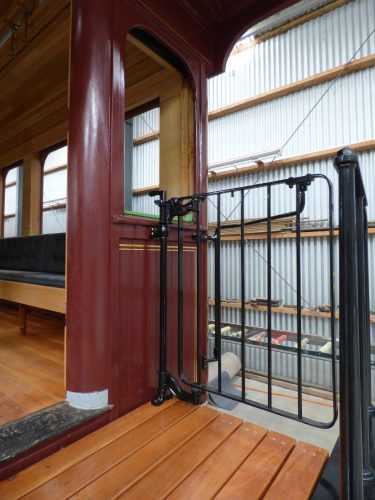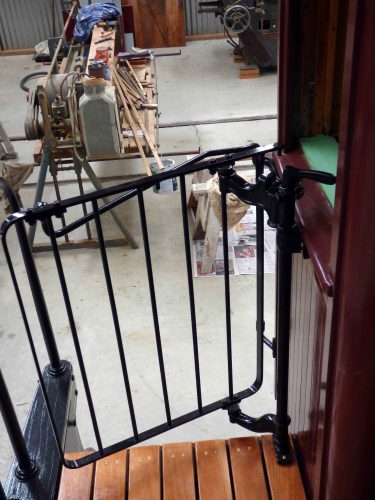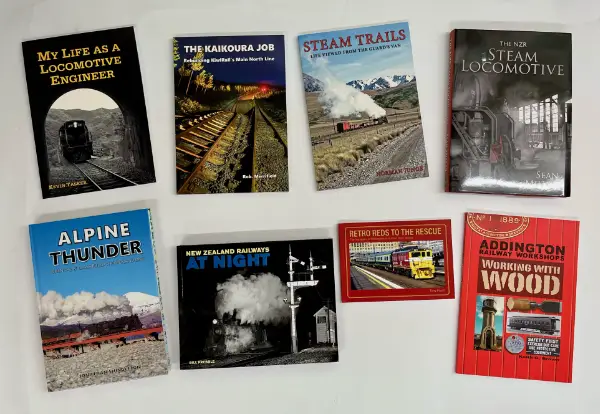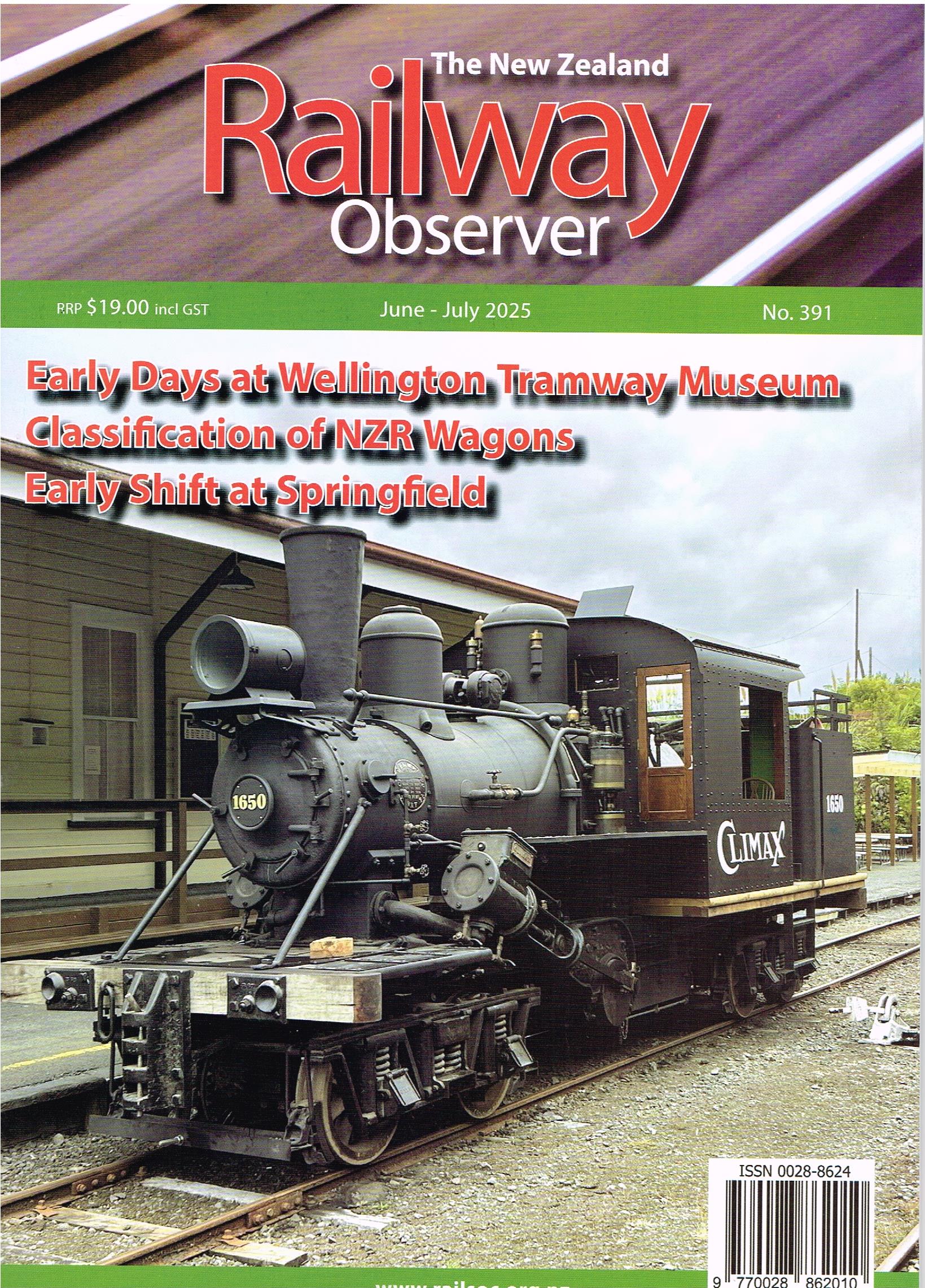This update is on the Woods safety gate as used by the Wellington and & Manawatu Railway, set up on WMR Carriage No. 48. Photo 1 (below) shows clearly the way the gate is double-hung, on swing arms, so it can close off access to or from the steps towards the ground. When open, the gate lies parallel with the end wall of the carriage, where it may be used as a handrail. This provides support to passengers on both sides of the entry to the balcony.
Woods patented safety gates originated in the USA, coming fitted to carriages built by the Jackson & Sharp factory of American Car and Foundry Company, long a builder of railway rolling stock. Similar gates were fitted to those carriages built by the WMR subsequently, including the three we hold in our workshop for restoration. They differ in detail from the design of safety gates used by New Zealand Railways, which were only single-hung. That made the latter simpler to fit and to use. Woods safety gates have not been used in New Zealand for well over 100 years, since NZR fitted its standard gates to WMR carriages after the WMR was bought by the government in 1908.
Photo 2 (below) shows the gate half open to show clearly the way the gate pivots at two points as it opens or closes. The gate is carried on two pivots on swing arms that also pivot. To open or close the gates it is unlocked using a control handle and swung. The swing arms turn as well as the gate frame, allowing the gate to align parallel with the end wall of the carriage when open, and to block access between the steps and the balcony when closed. A horizontal arm support the end of the gate farthest from the carriage wall.

Photo 1

Photo 2
If you wish to make a donation towards the restoration costs of the WMR Carriages this can be done by using the donation link below:


